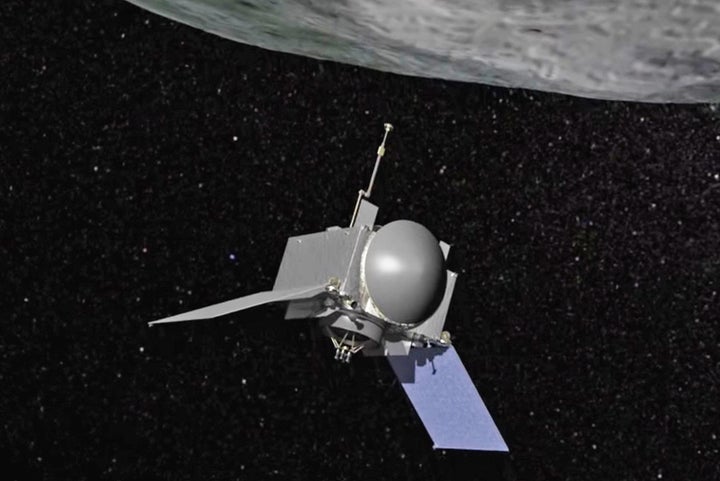
Are you a creative person who wishes your personal expressions of originality and imagination could transcend the boundaries of time and space?
Well, NASA wants to help you achieve that lofty goal. Literally.
In September, NASA will launch its OSIRIS-REx spacecraft on the first U.S. mission to collect samples of an asteroid and return them to Earth for study. The public is invited to submit art work about what exploration means to them, which will be saved on a computer chip and stored on the spacecraft.
"Space exploration is an inherently creative activity," Dante Lauretta, principal investigator for OSIRIS-REx at the University of Arizona in Tucson, said in a statement. "We are inviting the world to join us on this great adventure by placing their art work on the OSIRIS-REx spacecraft, where it will stay in space for millennia."
The spacecraft already carries a chip with more than 442,000 names that were submitted last year through NASA and The Planetary Society's "Messages to Bennu" campaign.
The target asteroid, Bennu, is named for an Egyptian deity associated with the sun and the creation of Earth. That's apropos, as mission scientists hope the samples retrieved during the mission will provide important clues of how our solar system formed and evolved.
Bennu -- which measures approximately 538 yards in diameter -- passes close to Earth every six years, meaning it grazed us by about 22,000 miles in 2013.
Check out the video below for a preview of the OSIRIS-REx journey to Bennu:
It will take seven years for OSIRIS-REx to carry out its primary goal of bringing Bennu samples -- about 60 grams, or 2.1 ounces -- back to Earth, according to Erin Morton, part of the OSIRIS-REx mission's Office of the Principal Investigator at the University of Arizona.
"We arrive at Bennu in 2018, spend a year surveying the asteroid, then take our sample in 2019," Morton told The Huffington Post in an email. "Once the sample is safely stowed, we have to wait until the asteroid comes near enough to Earth for the spacecraft to easily return -- which ends up being a little over a year. We leave the asteroid in early 2021 and return to Earth in late 2023."
When the mission is over, only the sample return capsule will fall back to Earth, so that the submitted art work from Earthlings will still be in space.
"The spacecraft itself will remain in space in a safe orbit around the sun, and without the weathering effects of the atmosphere, it has the potential to exist for thousands of years," Morton said.
Do you feel inspired now? If you've created something that you'd like to send to the stars rather than see sitting on a museum wall, submit your sketch, photograph, graphic, poem, song, short video or any other personal artistic expression to We The Explorers.
The submission deadline is Sunday, March 20, 2016, at 11:59 p.m. PDT.

